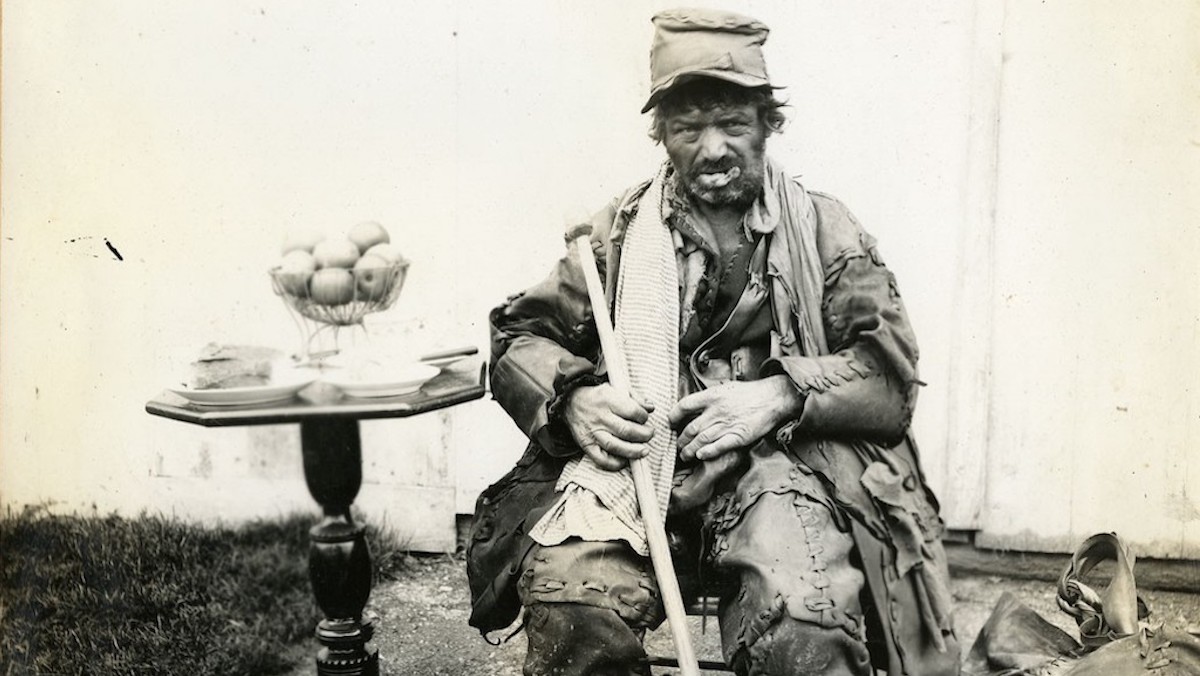Walking is a near-essential part of the human experience. It’s our primary mode of transport, obviously, but it’s also a hugely important part of our well-being. You can see this in articles about how doctors are prescribing time in nature to reduce stress and improve general health. While too much of a good thing can turn bad, walking rarely falls into that category. But what if all you did was walk?
That’s what the Leatherman did.
Who Was the Leatherman?
There was a vagabond who lived in New England in the mid-1800s known colloquially as the Leatherman. He hand-stitched himself a leather jacket – or perhaps full outfit – and walked around eastern New York and western Connecticut for most of his life. He walked the same ~360-mile loop over and over and over to the point that residents of the towns he visited knew him and would leave food for him. Nobody knew who he was and he effectively spoke no English, so nobody was able to learn his history. That is the story of the Leatherman.
Details!
The Leatherman was thought to be French, or at the very least French-Canadian. He reportedly spoke French fluently and was found with a French dictionary upon his death, but never communicated in English beyond “grunts and gestures.” His English skills never materialized. Despite this, and despite the fact that he just continually walked this route for at least twenty years, he was never destitute. He was always able to buy groceries from the towns he stopped in.
In fact, an account from the book The History of Tarrytowns says that he had a standard grocery store order of “a loaf of bread, a can of sardines, a pound of fancy crackers, a pie, two quarts of coffee, a gill of brandy and a bottle of beer.” He was so well-known that towns in the area made exceptions to statewide vagabond/tramp laws, allowing the Leatherman to do whatever he needed to do while in their towns.
But how did he do it? How could he afford to eat? He slept in caves and rock shelters throughout the region and just kept coming back to the same towns over and over, so he obviously wasn’t working odd jobs. Residents would occasionally make note of how often he visited, and apparently it came out – consistently – to every 34-36 days. This means he was walking about ten miles a day, with near-uniformity, for decades.
The first account of him was in a newspaper in 1870 and he died in 1889, but that first account suggests he’d been present long enough to warrant an article, so who knows how long it had been going on. His original headstone wrote that he’d been making the loop since 1858, but that is just one more thing that can’t be officially proven.
As for the money, residents (allegedly) grew concerned with his health by 1888 and had him arrested and sent to a hospital. He had the money to bail himself out of the arrest and hit the proverbial road. He died less than a year later, perhaps of mouth cancer, perhaps not. History is silent on whether he had a bunch of money with him or not. The only ailment the hospital reported was that he was “sane except for an emotional affliction,” which in present-day terms would be something like, “Not doing great. Has notable mental health problems.”
His death did nothing to solve the mystery of who he was. He received a gravestone, carved with the name Jules Bourglay, but nobody is quite sure why. That name was used in reporting about the Leatherman in 1884, but it was retracted multiple times over the subsequent years because nobody actually knew. Recent exhaustive research by a man named Dan DeLuca suggests that, while a correct name is not known, Jules Bourglay is definitely not the correct name.
Maybe someone can one day uncover a trace of who the Leatherman really was, and maybe there will someday be an explanation for why this route or why the money or why the leather suit (there is no record of where he got the leather in the first place), but in all likelihood this will remain a mystery. The Leatherman will just be the Leatherman, and all the stories about his life suggest that he would like it that way.
